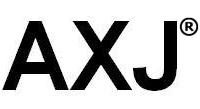PROGRAMMED INSTRUCTION PSYCHOLOGY >> Download PROGRAMMED INSTRUCTION PSYCHOLOGY
PROGRAMMED INSTRUCTION PSYCHOLOGY >> Read Online PROGRAMMED INSTRUCTION PSYCHOLOGY
It served as the beginning for programmed instruction as an art. Programmed Instruction works as a self-instructional package that presents a topic in a carefully planned sequence and requires the learner to respond to questions or statements by filling in blanks, selecting from a series of answers, or solving a problem. ADVERTISEMENTS: The term educational technology has a wide range of application at present. The examples of educational technology include both hardware and software learning sequences. In the hardware, we find the teaching machines, the computer-assisted instruction, the learner- controlled instruction and the CCTV. The examples of software instructional sequences are programmed learning The origin of modern programmed instruction is from the psychology of learning and not from technology. It is an application of „operant conditioning‟ learning theory to teaching -learning situations. It got historical momentum only after the publication of "The Science of Learning and Art of teaching" articles by B.F. Skinner in 1954. As a method, it can be applied through "teaching machines", and with computer-assisted-instruction. The 2 models of Programmed Instruction Educational Model. The two basic and most widely known models of Programmed Instruction are the following: The first is linear and it's how Skinner's teaching machines presented material. programmed instruction, vividly illustrates the results of inflexible instruction. Programmed instruction (also known as programed instruction), was a movement in instructional technology that developed in the mid-1950s, peaked in the 1960s, and then disappeared almost completely by the end of the 1970s. Programmed instruction has been Programmed instruction is a new method of teaching which features careful organization of the subject matter and active participation by the student. One of its first and foremost advocates was B. F. Skinner, Edgar Pierce Professor of Psychology, who has been using its techniques in Natural Sciences 114 since 1957. Skinner's Programmed Instruction (Skinner, 1958) The components of Skinner's programmed Instruction include: Behavioral objectives; Small frames M. P. (2000). Psychology of learning for instruction. 2nd Ed. Needham Heights, MA: Allyn & Bacon. Skinner, B. F. (1958). Teaching machines. Science 128 (967-77), 137-58. Behaviorism. Skinner's Programmed learning (or programmed instruction) is a research-based system which helps learners work successfully.The method is guided by research done by a variety of applied psychologists and educators.. The learning material is in a kind of textbook or teaching machine or computer.The medium presents the material in a logical and tested sequence. Most research regarding programmed instruction is based on the use of machines to handle instructional activities. The first use of a device to teach reading was carried out by H. Chard in 1809 Programmed instruction is a new method of teaching which features careful organization of the subject matter and active participation by the student. Edgar Pierce Professor of Psychology, A method of self-instruction that enlists machines or specially prepared books to teach information. Originally introduced in the mid-1950s by behaviorist B.F. Skinner, programmed instruction is a system whereby the learner uses specially prepared books or equipment to learn without a teacher. It was intended to free teachers from burdensome A method of s
![]()







 BECOME A RESELLER AND MAKE $$$ NOW!
BECOME A RESELLER AND MAKE $$$ NOW!




 <\/a>
<\/a> 

You need to be a member of AXJ to add comments!
Join AXJ